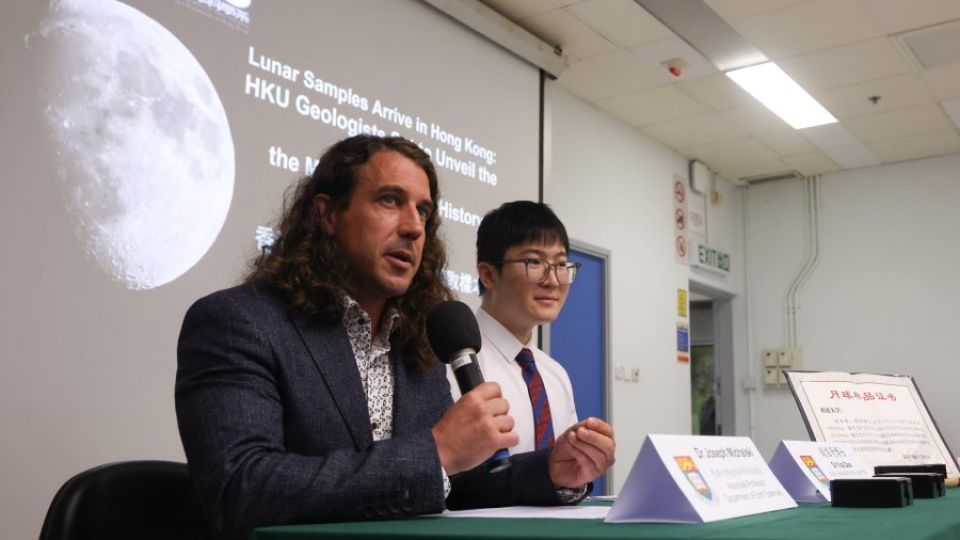August 8, 2023
HONG KONG – Geologists at the University of Hong Kong (HKU) have achieved a historic feat by bringing lunar soil samples collected by the Chinese lunar probe Chang’e 5 in 2020 to Hong Kong for research, becoming the city’s first team to participate in the analysis of lunar soil.
The samples will be used to uncover the secrets of the lunar basalts and to investigate the longstanding mystery surrounding volcanic activity on the moon.
The geologists believe that analyzing these lunar samples will accelerate lunar and planetary science development in Hong Kong, enhance deep space innovation, and deepen ties between Hong Kong and the Chinese mainland in deep space exploration.
During a media briefing on Monday, Qian Yuqi, a postdoctoral fellow from the Department of Earth Sciences at the Faculty of Science at HKU, said that the lunar samples, weighing 822.6 milligram, can only be stored at HKU for one year and must be returned to Beijing afterwards.
“This is a dream come true for us and for Hong Kong’s space science community,” said Qian, adding that he was excited and honored to have obtained the samples.
ALSO READ: Chang’e-5 moon samples suggest exploitable water resources
When Qian learned that applications to access the 6th batch of lunar research samples collected by Chang’e 5 had opened earlier this year, he swiftly formed a team to apply for the samples, which included some renowned geologists, geochemists, and astrobiologists at HKU. This became HKU’s first lunar research team.
The team submitted its application and received approval from the China National Space Administration. At the end of July, Qian personally traveled to Beijing and brought the samples to Hong Kong.
The lunar samples have great potential to reveal the mysteries of the moon’s volcanic history and provide valuable insights into its geological history as well as its connection to the formation and evolution of planetary bodies in the solar system, Qian said.

Lunar soil samples collected by the Chinese lunar probe Chang’e-5 are presented to the media at the University of Hong Kong on Aug 7, 2023. (CALVIN NG / CHINA DAILY)
The samples can also provide insights into the initial conditions on Earth and the planet’s subsequent evolution, since the early environment on the moon and on Earth were similar, he added.
Qian also believes that this research will lay the foundations for studying samples from future lunar missions over the next decade. Chang’e 6, 7 and 8 are scheduled to be launched around 2024, 2026 and 2028 respectively, and lunar samples will be sent back to Earth from those missions.
Qian vowed that the team will conduct their study promptly and will handle these valuable samples with utmost care, to ensure that they can be properly preserved, recycled and utilized for future research.

Lunar soil samples collected by the Chinese lunar probe Chang’e-5 are presented to the media at the University of Hong Kong on Aug 7, 2023. (CALVIN NG / CHINA DAILY)
Qian previously garnered attention in the field of planetary geology for his exceptional research into Chang’e 5’s landing site.
Chang’e 5 was China’s first attempt to collect lunar soil samples. In December 2020, the probe brought a lunar soil sample weighing 1,731 grams to Earth, marking the first such mission in over 40 years since the Soviet Union’s lunar program in 1976.
Before Chang’e 5’s landing on the moon, Qian hypothesized that the eastern part of the selected landing region contained one of the youngest mare basalts caused by volcanic eruptions on the moon, a discovery that was later confirmed by the collected sample and helped reshape human understanding of lunar history.
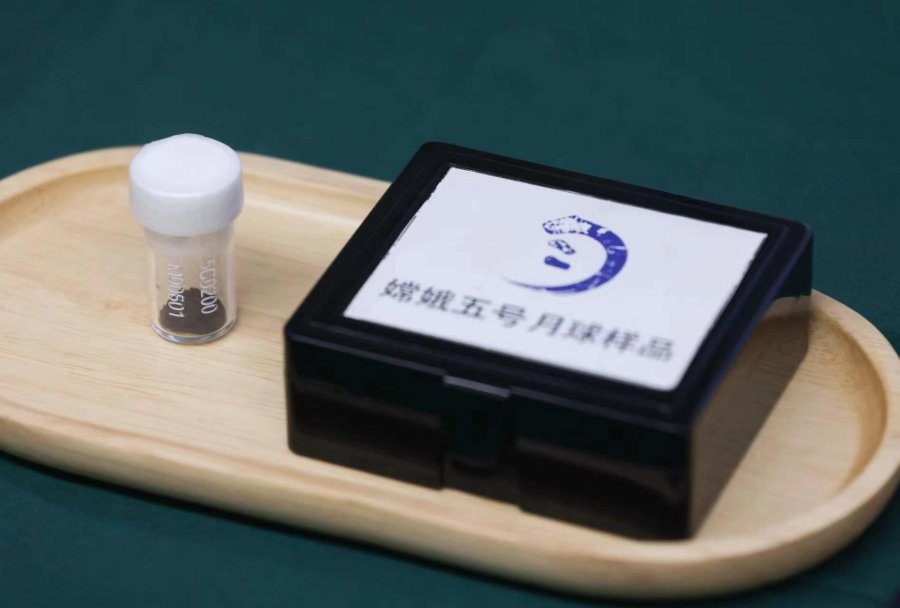
Lunar soil samples collected by the Chinese lunar probe Chang’e-5 are presented to the media at the University of Hong Kong on Aug 7, 2023. (CALVIN NG / CHINA DAILY)
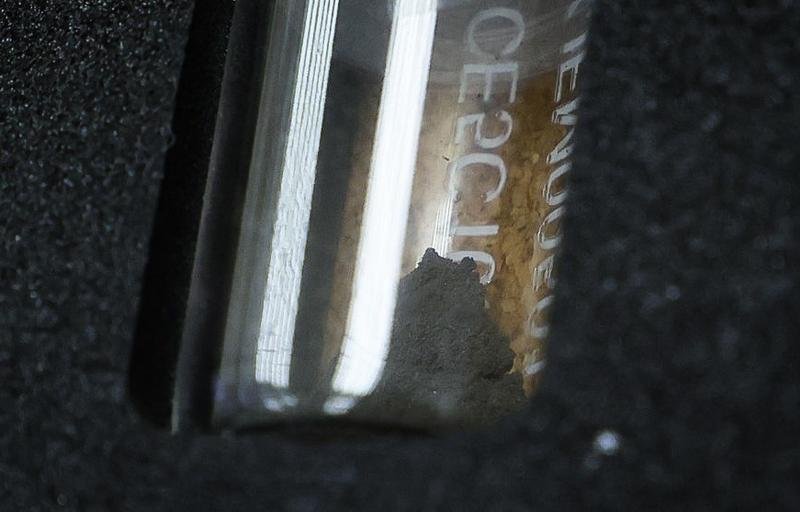
Lunar soil samples collected by the Chinese lunar probe Chang’e-5 are presented to the media at the University of Hong Kong on Aug 7, 2023. (CALVIN NG / CHINA DAILY)
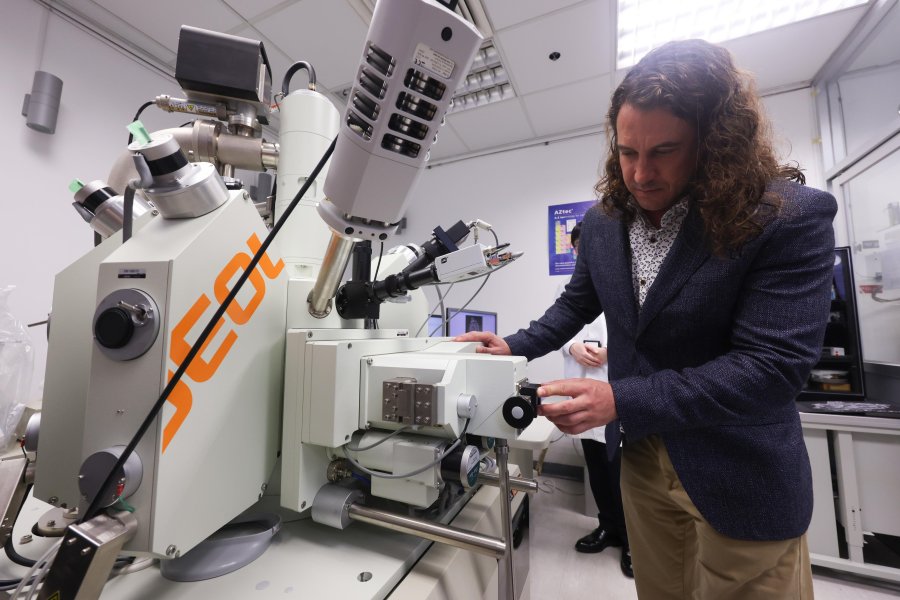
Joseph Michalski, associate professor at the University of Hong Kong’s Department of Earth Sciences, poses in front of an Electron Probe Microanalyzer (EPMA) on Aug 7, 2023. (CALVIN NG / CHINA DAILY)
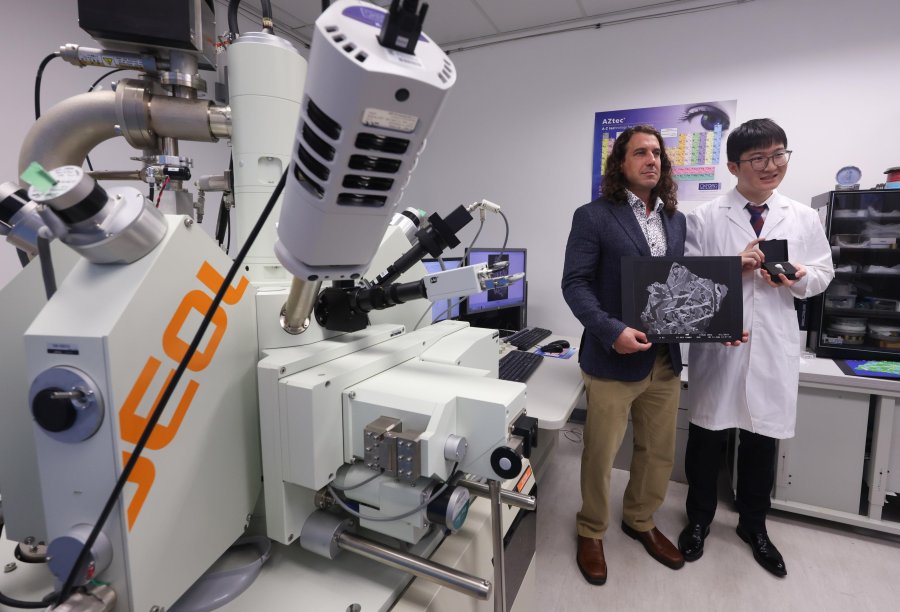
Qian Yuqi (right), a postdoctoral fellow at the University of Hong Kong’s Department of Earth Sciences, and associate professor Joseph Michalski (left) pose with an image of the lunar soil samples taken by the Electron Probe Microanalyzer on Aug 7, 2023. (CALVIN NG / CHINA DAILY)
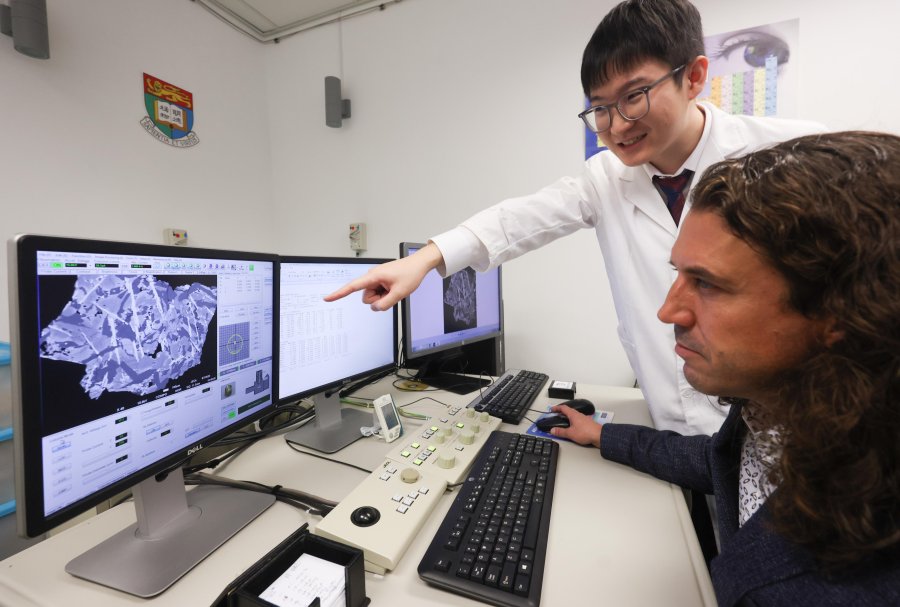
Qian Yuqi (left), a postdoctoral fellow at the University of Hong Kong’s Department of Earth Sciences, and associate professor Joseph Michalski (right) discuss an image of the lunar soil samples taken by the Electron Probe Microanalyzer on Aug 7, 2023. (CALVIN NG / CHINA DAILY)


